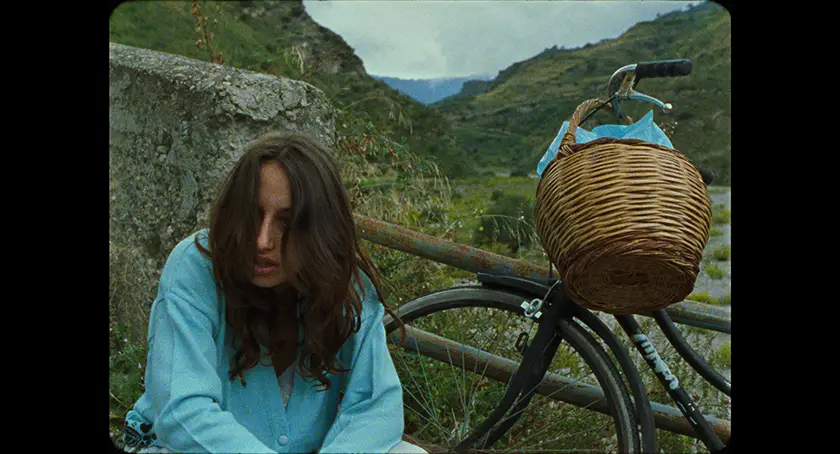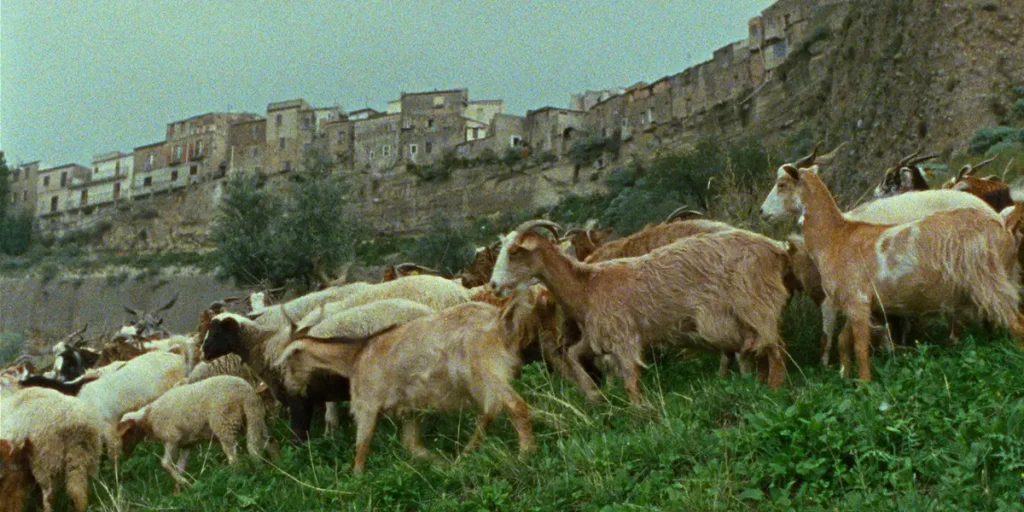Michelangelo Frammartino’s debut film Il Dono returns to cinemas, with time only accentuating its capacity to surprise.
Director: Michelangelo Frammartino
Genre: Drama
Run Time: 80′
4K Restoration U.S. Release: July 25, 2025 (limited)
4K Restoration U.K. Release: TBA
Where to Watch: At Metrograph (New York)
It’s a vote of confidence when a film is optioned for a re-release, and even more so when it’s an underseen smaller film, one that scarcely got a release the first time around. Michelangelo Frammartino’s 2003 feature debut Il Dono (The Gift) receives a new 4K restoration, and in doing so its distributors recognise that the film warrants further examination, not least because it’s like nothing the director has made since. He now specializes in gentle portraits of rural landscapes and their inhabitants, but Il Dono is a different beast.
Yes, it’s a sparse slice of country life like his later movies, but it’s also angrier and more critical of the rituals and routines that keeps its characters trapped in their isolation.
The opening of Il Dono locates the film perfectly. A nameless old man (Angelo Frammartino, the writer-director’s grandfather) finds his elderly dog ailing on the doorstep of his one-room shack in rural Calabria, and decides to put the poor creature out of its misery offscreen. Right from the start, the younger Frammartino lets the audience know this will not be a cheery portrayal of the rolling Italian countryside. The sky is dark blue, bordering on grey, and there is little colour in any other aspect of this old chap’s life. The early dispatching of the dog puts paid to any comparisons to the likes of De Sica (This has some plot elements in common with Umberto D., but at least De Sica let the dog live). Il Dono is adept at quenching signs of hope.
A couple of local young bikers help the man bury his pet, but after they leave he finds one of them has left behind his mobile phone, and a pornographic photograph. As he returns to gaze on the picture time and again, and the ringing phone disrupts his peace and quiet, Il Dono paints a portrait of an old-school world being encroached upon by the forces of modernity. Wherever our man looks, he sees the quietness of the old world and the enticements of the new colliding. The crumbling walls of the local barber and mechanic display calendars of topless models, while older folks about the town seem to do little besides pray and nod off in their chairs.

However, that is only half the story of Il Dono. As the old man goes through his days, a young mute woman (Gabriella Maiolo) rides her bike around the countryside, pausing at a bridge for a cigarette. Everybody has their routines, but where our old man passes his time pottering in his makeshift garden, this young woman picks up johns for sexual favours. It’s a harsh contrast, one that Frammartino uses to suggest that the salaciousness with which the old man has been confronted has always been around, but just not flaunted as openly.
There is real discomfort in the story of this young woman; her inability to speak and body language suggests she is intellectually challenged, and moments of surprisingly upfront sexual contact contrast with the rugged Calabrian countryside. Frammartino brings together the sparse beauty of Kiarostami and the brutal honesty of Alan Clark in a melange that’s sometimes uncomfortable to watch, but which belies the quietness of the characters and landscape. Deep currents of turmoil run beneath these still fronts.
Frammartino’s script skilfully builds layers of character and narrative over its brief runtime. The repetition and gentleness of the old man’s movements, and the disruption of his patterns, reveals much about him and where he lives. This rural community is almost frozen in time, with centuries-old buildings and a scarcity of modern conveniences (The few glimpses of passé early-2000s technology only add to this feeling of anachronicity). The fusion of old and new tastes extends to the filmmaking; the use of a 4:3 aspect ratio could be interpreted as an affectation too far, but it’s effective in underlining that sense of a community stuck in its ways.
This pause in time is only ruptured when the old man sees the young woman in passing, and begins finding ways to encounter her again. Whether or not he’s acting on lust or pity introduces tension to the second half of Il Dono, reiterating its thesis that either motivation is always possible. Frammartino is keen to ensure his characters are not judged too hastily. One of the most notable features of Il Dono is its almost total lack of dialogue, and an absence of subtitles for anything that is said. These characters see no use in speaking, letting the resigned droop of their shoulders and vacant stares speak for themselves.
Il Dono was a great calling card from Frammartino, and he’s scarcely strayed from his remit of slow cinema that’s brief and to the point. There’s an emotional cruelty to Il Dono that fans and newcomers alike could find off-putting, but it’s a testament to his skill and observant eye that the film doesn’t feel dishonest.
Il Dono: Movie Plot & Recap
Synopsis:
The lives of an elderly gentleman and a naive young woman intersect against a backdrop of encroaching modernity in southern Italy.
Pros:
- Written and filmed with Frammartino’s trademark patience
- Grounded and compelling performances
- A capacity to surprise and shock with its forthright sexuality and emotional violence
Cons:
- The combination of a calm pace and blunt narrative developments dares the audience to become offended or to lose patience
A new 4K restoration Il Dono will be re-released for an exclusive one-week theatrical run at Metrograph (New York) from July 25, 2025.

